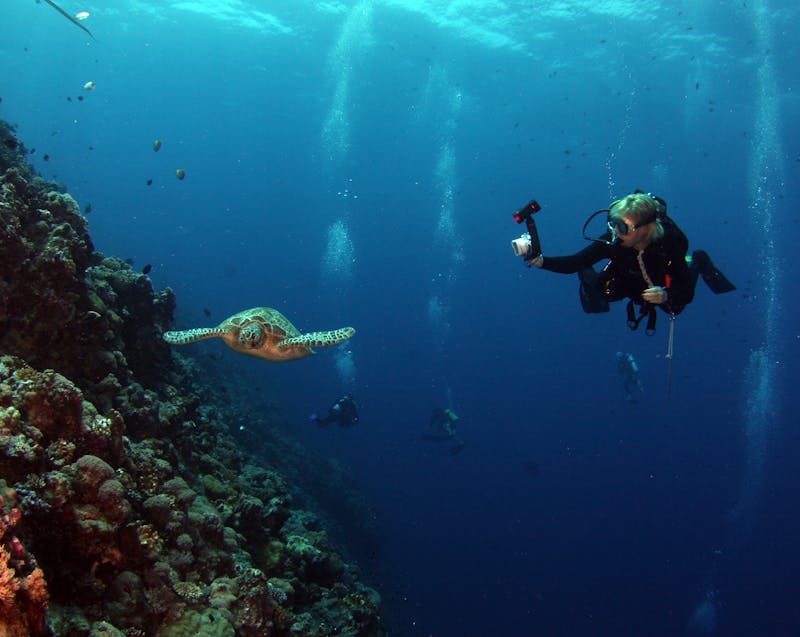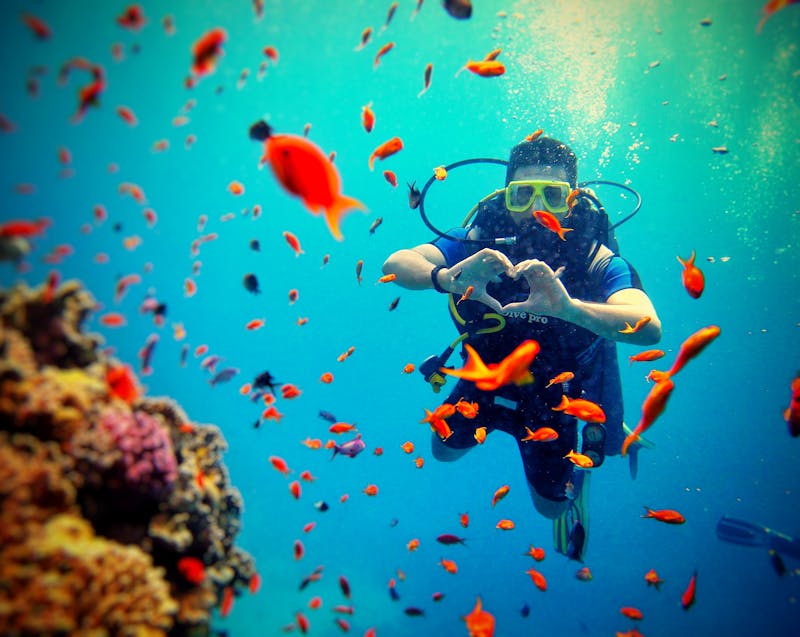
Scuba diving has a magical way of pulling you into another world — a silent, weightless realm teeming with life, color, and mystery. Whether you’re gliding past coral reefs, exploring shipwrecks, or watching marine creatures in their natural habitat, the experience can feel almost surreal. But despite its growing popularity, many people still have misconceptions about how scuba diving actually works.
Some imagine it’s dangerous, complicated, or reserved only for elite athletes. Others believe the myths they’ve heard from movies, hearsay, or social media. The truth? Scuba diving is far more accessible, safe, and fascinating than you might think — provided you understand the basics and follow the rules.
In this article, we’ll break down how scuba diving works, separate fact from fiction, and give you a realistic picture of what to expect beneath the waves.
The Basics: What Exactly is Scuba Diving?
Scuba diving — short for Self-Contained Underwater Breathing Apparatus diving — is an activity that allows humans to explore underwater for extended periods using specialized equipment. The scuba system provides divers with breathable air (a mixture of oxygen and nitrogen) from tanks carried on their backs, regulated through a mouthpiece called a regulator.
Unlike snorkeling, where you stay at the surface, scuba diving lets you descend into deeper waters, sometimes reaching 18 meters (60 feet) for beginners, and much deeper for advanced or technical divers. This ability to stay underwater for long periods without resurfacing opens up a world of exploration — from vibrant coral gardens to mysterious wrecks and underwater caves.
Scuba diving is both a sport and a science. It blends physics (how pressure affects your body and equipment), physiology (how your body reacts to breathing compressed air), and environmental awareness (understanding marine ecosystems). This combination is what makes it such a unique adventure.
How Does Scuba Diving Work? The Science and Process
Before we dive into the myths, it’s important to understand the actual mechanics of scuba diving. While it might seem like magic, it’s really a carefully balanced system of equipment, training, and natural laws.
When you scuba dive:
- You carry your air supply in tanks, usually filled with compressed air or enriched air nitrox.
- A regulator delivers air on demand — meaning you only get air when you inhale.
- Buoyancy control devices (BCDs) allow you to float, hover, or sink by adjusting air inside them.
- Weights counteract your body’s natural buoyancy so you can descend.
- Fins help you move efficiently with minimal effort.
The key factor is pressure. As you go deeper, water pressure increases, which affects your ears, lungs, and other air spaces in your body. That’s why divers are taught to “equalize” their ears and ascend slowly — to prevent injuries like barotrauma or decompression sickness.
Understanding these basics makes it clear: scuba diving isn’t about holding your breath or risking your safety; it’s about using technology and training to explore a world we can’t naturally access.
Myth #1: You Need to Be an Expert Swimmer to Dive
Many people assume that scuba diving is reserved for Olympic-level swimmers. While swimming ability is important, you don’t need to be a competitive swimmer to enjoy diving.
The fact: Diving is more about comfort in the water than speed or stamina. In most beginner courses, you’ll be required to swim a short distance (around 200 meters) and float for about 10 minutes. These tests ensure you’re comfortable in the water, not that you can win a race.
Why this myth persists: Popular culture often shows divers in extreme scenarios, battling strong currents or swimming great distances. In reality, most recreational dives are calm, slow-paced, and focused on exploring rather than swimming laps.
Tip for beginners: If you can float, tread water, and swim at a relaxed pace, you can likely learn to scuba dive.
Myth #2: Scuba Diving is Dangerous
Danger is one of the biggest misconceptions about diving. Yes, it involves risks — like any adventure sport — but these risks are well-managed through training and safety protocols.
The fact: According to the Divers Alert Network (DAN), recreational scuba diving has a safety record comparable to that of swimming. Proper training, equipment checks, and adherence to guidelines significantly reduce the chances of accidents.
Common safety measures include:
- Always diving with a buddy
- Doing pre-dive equipment checks
- Monitoring air supply and depth
- Ascending slowly to avoid decompression sickness
Why this myth persists: The Media often dramatizes underwater accidents or shows extreme diving situations that are far from the norm for recreational divers.
Reality check: For adventure seekers and nature lovers, diving is one of the safest ways to explore nature — as long as you respect the rules.
Myth #3: Sharks Are a Constant Threat
Thanks to blockbuster movies, many believe scuba diving means constantly fending off sharks.
The fact: Shark attacks on divers are extremely rare. In reality, most sharks are shy and avoid human contact. Divers often seek out shark encounters — in controlled environments — to witness these fascinating creatures up close.
Why this myth persists: Pop culture has painted sharks as aggressive predators. While they are apex predators, their interactions with humans are minimal and usually non-aggressive.
Tip for divers: If you’re lucky enough to see a shark underwater, enjoy the moment — it’s a rare and thrilling experience.
Myth #4: You Can Run Out of Air Suddenly
Some people fear they’ll be 20 meters underwater when their air “mysteriously” runs out.
The fact: Scuba tanks don’t suddenly stop delivering air without warning. Divers are trained to check their pressure gauges frequently, ensuring they always have enough air to ascend safely.
Why this myth persists: People unfamiliar with diving imagine it’s like holding your breath — one second you have air, and the next, you don’t. In reality, it’s a gradual process you can monitor.
Safety protocols include:
- Ending the dive with a reserve of air
- Communicating with your buddy about air levels
- Planning dives to match the slowest air consumption rate in the group
Myth #5: Scuba Diving is Only for the Young and Fit
Some believe diving is too physically demanding for older adults or those without perfect fitness levels.
The fact: People of all ages — from teenagers to those in their 70s — scuba dive safely. The main requirements are good health, the ability to carry equipment, and medical clearance from a doctor if needed.
Why this myth persists: The image of divers carrying heavy gear on boats or beaches makes people assume it’s too strenuous. But in the water, the equipment feels almost weightless.
Reality check: If you’re reasonably healthy and comfortable in water, you can dive.
Myth #6: You Can Go Straight to Deep Diving
Some thrill-seekers assume they can sign up for a dive and go straight to 40 meters deep.
The fact: Beginners are limited to 18 meters for safety reasons. Deeper dives require advanced certification and training. Depth increases risks, including nitrogen narcosis and decompression sickness, so gradual progression is essential.
Tip: Focus on mastering shallow dives first — you’ll be surprised how much life there is even at 10 meters.
Myth #7: Scuba Diving Harms Marine Life
Some assume divers damage reefs or disturb animals simply by being in the water.
The fact: Responsible diving practices — like not touching corals and keeping a safe distance from wildlife — ensure minimal impact. Organizations like PADI and Project AWARE promote eco-friendly diving, and many divers participate in underwater cleanups and conservation efforts.
Reality check: Divers are often the ocean’s greatest advocates, helping protect the very environments they explore.
Myth #8: You Can Hold Your Breath While Diving
This is one of the most dangerous misconceptions.
The fact: Holding your breath while ascending can cause lung overexpansion injuries due to expanding air in the lungs as pressure decreases. Divers are taught to breathe continuously and never hold their breath underwater.
Why this myth persists: Freediving and scuba diving sometimes get confused, but the breathing rules are entirely different.
Myth #9: Certification is Complicated and Expensive
Some think getting certified requires months of training and thousands of dollars.
The fact: Most Open Water Diver certifications take 3–4 days and cost far less than many other adventure sports. Many dive shops offer packages that include training, equipment rental, and certification fees.
Why this myth persists: People mistake scuba training for professional-level courses or assume costs are the same as luxury dive trips.
Fact: The Underwater World is More Accessible Than Ever
Advancements in equipment, training, and safety have made scuba diving accessible to millions worldwide. There are dive sites for all skill levels — from shallow reefs perfect for beginners to challenging wrecks for experts.
For adventure seekers and nature lovers, diving offers a front-row seat to the planet’s most diverse ecosystems. The weightlessness, the vibrant marine life, and the sheer serenity of the underwater world create experiences unlike anything on land.
Tips for First-Time Divers
If you’re ready to explore, here’s how to start:
- Take an introductory course or “Discover Scuba” experience before committing to certification.
- Choose a reputable dive center with certified instructors.
- Listen carefully during briefings and practice skills in shallow water first.
- Dive within your limits and never feel pressured to go deeper or longer.
- Respect marine life — look, don’t touch.
Conclusion: Myths Can’t Compare to Reality
Scuba diving is not the exclusive, high-risk sport that myths make it out to be. It’s an accessible, safe, and awe-inspiring way to connect with nature on a level few people ever experience. Whether you dream of exploring coral reefs, photographing marine life, or simply floating in the stillness of the deep, diving offers a unique blend of adventure and peace.
The best way to understand how scuba diving works? Try it for yourself. Once you’ve experienced the beauty and calm of the underwater world, you’ll see that the facts are far more captivating than the myths.


